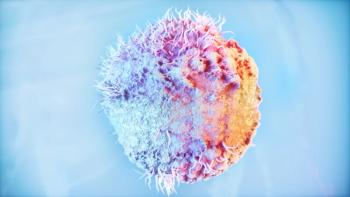
When Shingles Gets In Your Eyes
The special challenges of herpes zoster ophthalmicus include the risks of glaucoma and corneal scarring.
Varicella zoster is an opportunistic adversary. The virus initially causes chickenpox and then burrows into the central nervous system for a period of inactivity. Decades later it can reactivate when the person’s immune system is compromised, spreading through peripheral nerves to cause
The American Academy of Ophthalmology (AAO) considers HZO, also called ocular shingles, to be a
Early symptoms of HZO include fever and headache followed by a tingling of the scalp and forehead. Within days a unilateral vesicular rash develops within the dermatome, including the upper eyelid and nose. One clinical sign of HZO is a vesicle on the tip of the nose that’s known as Hutchinson’s sign.
Rebecca J. Taylor, MD, an ophthalmologist in private practice in Nashville, says that pharmacists can play an important role in identifying HZO in its earliest stages. “If a person comes in and says, ‘I’m having burning and tingling in my scalp, and I’ve felt sick for the last couple of days’, that’s pretty classic for HZO,” she explains. “The next question would be, ‘Have you noticed any bumps on your forehead or scalp?’” Patients should be referred to a physician, she says. Taylor is a clinical spokesperson for the AAO.
Taylor also recommends that patients see their ophthalmologist when HZO is suspected. If left untreated, 50% to 70% of HZO patients develop acute ocular complications. In addition to pain and redness, complications include swelling of the eyelid, sensitivity to light, keratitis, pseudodendrites, uveitis, glaucoma, and neurotrophic disease. Corneal inflammation and scarring, blindness, and visual impairment can also occur, sometimes months or years later.
The
“Patients with HZO not only are treated with oral acyclovir or famciclovir, but also with topical steroids,” explains Taylor. “It’s very helpful for the corneal disease, for calming down the inflammation on the inside of the eye which leads to glaucoma, and for treating the deeper layers of the eye. IV administration can even be considered.”
Daily washing and dressing of the affected areas with clean, fresh bandages is recommended. Patients should be told to avoid touching the rash and keep it covered to reduce the risk of transmitting the virus. Scrupulous handwashing following contact with the blisters or bandages is also critical to avoid cross infection.
The first line of defense against shingles and HZO is vaccination. The AAO advises that ophthalmologists recommend it to their eligible patients age 50 years and older.
Newsletter
Pharmacy practice is always changing. Stay ahead of the curve with the Drug Topics newsletter and get the latest drug information, industry trends, and patient care tips.











































































































































































































